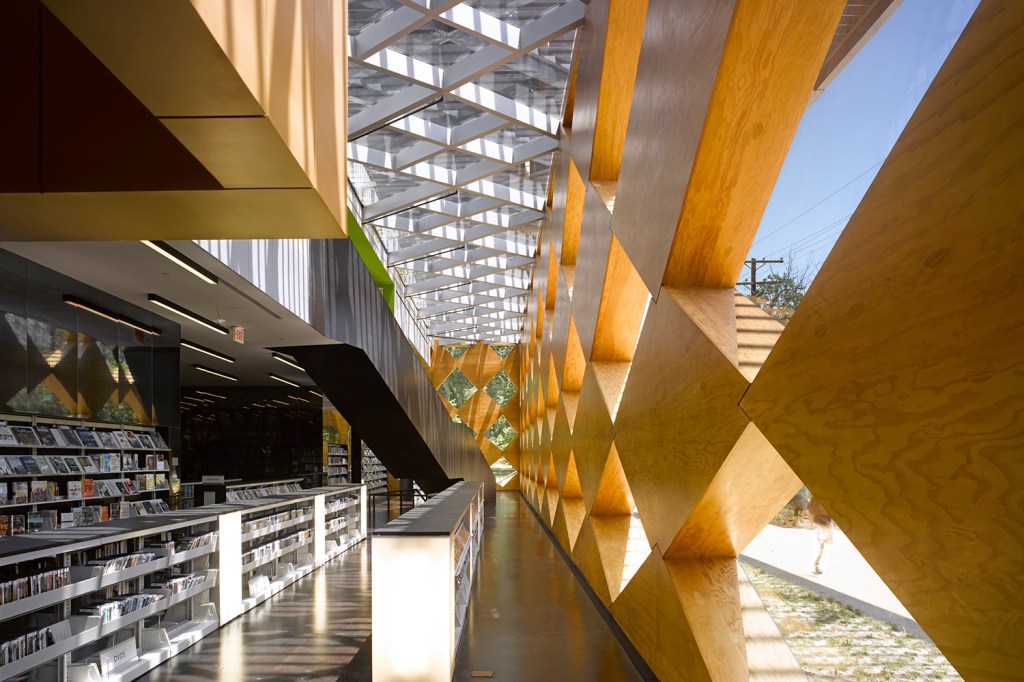The stock in trade of David Adjaye, Hon. FAIA, is
to start with a material-kit-of-parts influenced by things old and hand-crafted
(fabric weaving, early decorative metal works, mud-brick construction) and end
with public spaces that still read as Modern. Adjaye’s first mid-career retrospective
focuses on his firm Adjaye Associates‘ spate of African and developing world projects, where the
opportunity to return to his native continent brings him closest to his sources
of inspiration. Making Place: The Architecture
of David Adjaye begins with Adjaye’s residential projects, including Roman
Ridge Gardens in Accra, Ghana—a massive concrete apartment house in the style
of Corbusier’s Unité d’Habitation—rendered as a pristine white model. Which is
a shame, because the exhibit catalog reveals a ruddy pigmented concrete, textured
with patterns of upturned triangles. Through the rest of the exhibit, models of
Adjaye’s projects are transposed next to raw visual media his studio uses for
reference: site snapshots, newspaper clippings, and historical diagrams.
This presentation ably discards the fiction that architects’ best ideas emerged fully-formed on napkin sketches. It also aids the presentation of the Aïshti Foundation in Beirut, a shopping center and art space. Adjaye wraps the building in a screening system of ceramic thunderbolt tiles, a full-scale mock-up of which dominates the gallery. In renderings, the massing of parallel lines resembles roughly stitched fabric; a monolithic presence wrapped in a warm blanket. On the wall, there’s more fabric: photos of “Beirut Fashion Week.”
One of Adjaye’s most recent African commissions is the Ghana National
Museum on Slavery and Freedom, where he explores the same questions of
inequality and cultural heritage as his Smithsonian museum. The Ghana Museum is
sited next to what used to be a coastal slave-trading fortress, and draws its triangular form
from the castle, subverting its hierarchical chambers of oppression into a sort
of town-square-in-a-triangle. This human trading post and dozens like it first brought
West Africans like Adjaye exposure to the rest of the world. That David Adjaye
is being conveyed through architecture’s elite circles by considerably loftier
means and has been given the opportunity to look back is the best news this
exhibition has to offer. • Making Place: The Architecture of David Adjaye is on view at the Art Institute of Chicago through Jan. 3, 2016
Watch ARCHITECT‘s walkthrough of the exhibition below:
